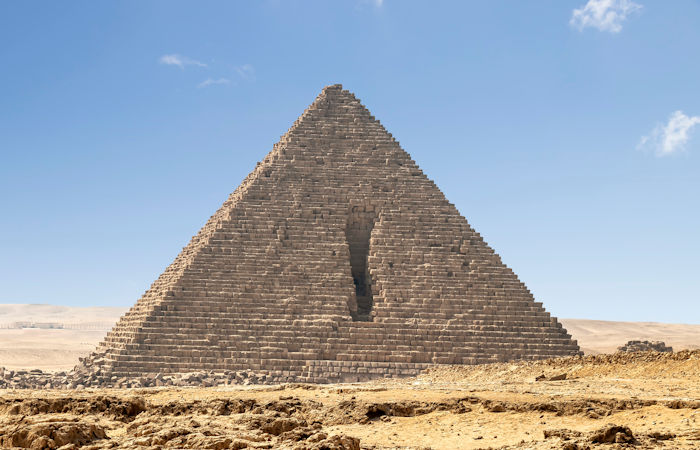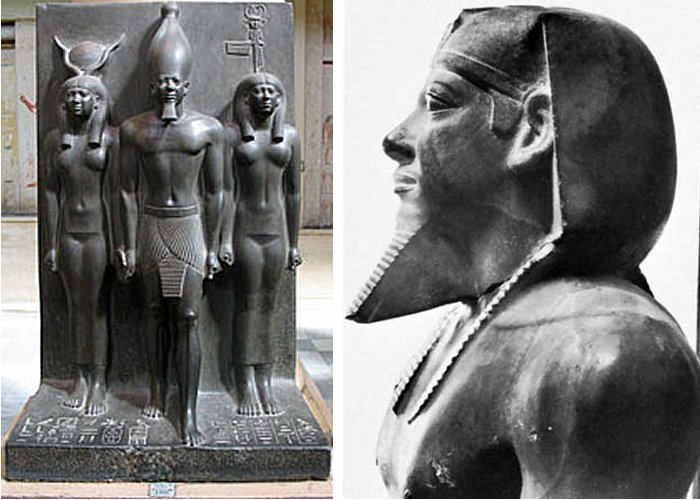Mysterious Pyramid Of Menkaure Remains An Ancient Puzzle
Ellen Lloyd - AncientPages.com - Pyramids are frighteningly anonymous structures.
Pharaohs built huge and well-constructed pyramids, tombs, and temples to glorify themselves and to be remembered after death, but their bodies were never inside these structures.
The Pyramid of Menkaure is the smallest of the three main Pyramids of Giza, located on the Giza Plateau in the southwestern outskirts of Cairo, Egypt. Credit: Adobe Stock - Alfredo
In none of them the bodies of builders or rulers were found, and when they were occasionally found, it turned out to be "very young" and had no connection to Egypt's ancient times.
The Old Kingdom stone pyramids were never actually ‘real’ tombs. The 19th-century so-called 'tomb theory' was only invented to replace earlier theories suggesting the pyramids as storehouses for grain or repositories of sacred measurements of the planet.
So for what purpose were these impressive gigantic structures built?
In fact, no one, even Sir William Flinders Petrie, the earliest authority on the pyramids of Giza, had any idea about it.
Isn't it strange that 'tens of millions of stone blocks used in Egypt’s large pyramids construction, from Meidum in the south to Abu Rawash in the north, and in no place is the name of their builders inscribed, except for a single quarry mark of red ochre paint in the Great Pyramid,' (Malkowski, Ancient Egypt 39,000 BC).
Left: Menkaure with Hathor on his right, and nome figure on his left; Right: Menkaure, detail of an alabaster statue from Giza; in the Egyptian Museum, Cairo Courtesy of the Egyptian Museum, Cairo; photograph, Hirmer Fotoarchiv, Munich
This single quarry mark 'was possibly forged by Richard Howard-Vyse under the pressure of competition with another archaeologist, the Italian Count Caviglia.'
Despite the claim that the pyramid was a tomb, several Egyptologists do recognize that the intent of the pyramid still remains a mystery.
Mysterious Pyramid of Menkaure
The 4,300-year-old pyramid of Menkaure, the smallest of the famous trio at Giza (some 200 feet lower than the other two), is now open to the public after the completion of its renovation.
The pyramid of Menkaure (Mycerinus) measures 356 feet (108 meters) along each side and some 215 feet (65 meters) in height and an angle of 51 degrees. It was built to serve as the tomb of the fourth dynasty Pharaoh Menkaure (2530 BC.-2500 BC.)
This pyramid is also very anonymous. We do not know much about Menkaure.
Researchers discovered an empty basalt sarcophagus, an anthropoid coffin lid made of wood, and some bones. These bones, along with the coffin, were later proved to be dated from the early Christian era and had no connection to Pharaonic times.
On the other hand, the basalt sarcophagus could have belonged to Menkaure.
Unfortunately, nobody had the opportunity to examine it because it had been lost at sea when the ship on which Vyse sent it to England had sunk off the coast of Spain.
Since it was a matter of record that the sarcophagus had been found empty by Vyse, it was once again assumed tomb robbers must have removed the pharaoh's body.'
This 'robbery theory' was only supported by 'evidence' of the missing mummies and grave goods.
The lack of bodies in the pyramids and the absence of decorations and inscriptions in countless galleries, chambers, corridors, and passageways are also evident.
The same is true regarding all three Giza pyramids. Not a single word - praising the pharaohs - has been inscribed on the pyramids' walls.
Other burial places of ancient Egypt have beautiful decorations, paintings, and inscriptions referring to the ritual spells and invocations indispensable for the deceased on his journey toward eternal life.
Nothing like that can be found in Giza's trio, and that's because these pyramids were not built to serve as tombs at all.
The sixth ruler of the 4th dynasty, Menkaure, built himself a pyramid one-tenth the size of Khafre's. And unlike the other Great Pyramids, whose walls were made of limestone, Menkaure's pyramid was covered with granite on the bottom levels and in the burial chamber—a costlier, more difficult stone to work with.
Menkaure died unexpectedly, and work on his pyramid complex was abandoned. Later, Menkaure's heir, Shepseskaf, the sixth and last pharaoh of the 4th dynasty of Egypt during the Old Kingdom, later completed the complex using mud brick.
"Menkaure’s son and successor, Shepseskaf, used mud brick to complete the Mortuary and Valley Temples, all of the subsidiary pyramid temples, the Causeway, and probably the Enclosure Wall. A stele found in eight pieces in the portico of Menkaure’s Mortuary Temple reads:
“Under the Majesty of the King of Upper and Lower Egypt, Shepseskaf, the Horus, Shepsesy-khet, in the year after the first census of the large and small cattle, he made it as his monument for his father, the King of Upper and Lower Egypt [Menkauwra].” 1
Updated on March 5, 2024
Written by Ellen Lloyd – AncientPages.com
Copyright © AncientPages.com All rights reserved. This material may not be published, broadcast, rewritten or redistributed in whole or part without the express written permission of AncientPages.com
Expand for referencesReferences:
- Rigano, Ch. Pyramids of the Giza Plateau
Metropolitan Museum of Art, Egyptian Art in the Age of the Pyramids
A. Sutherland - Pharaoh Menkaure – Egyptian Ruler Who Tried To Outsmart Fate - AncientPages.com
More From Ancient Pages
-
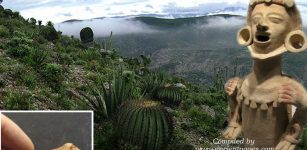 Unexpected Discovery Reveals People Arrived In North America 20,000 Years Earlier Than Previously Thought
Archaeology | Jun 5, 2021
Unexpected Discovery Reveals People Arrived In North America 20,000 Years Earlier Than Previously Thought
Archaeology | Jun 5, 2021 -
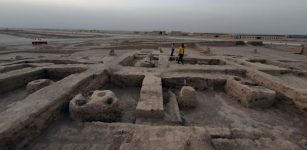 Ancient Parthian City With Hundreds Of Artifacts Unearthed In Iraq
Archaeology | Aug 16, 2022
Ancient Parthian City With Hundreds Of Artifacts Unearthed In Iraq
Archaeology | Aug 16, 2022 -
 Underwater City: Unveiling The Secrets At The Bottom Of Fuxian Lake
Featured Stories | Jun 13, 2015
Underwater City: Unveiling The Secrets At The Bottom Of Fuxian Lake
Featured Stories | Jun 13, 2015 -
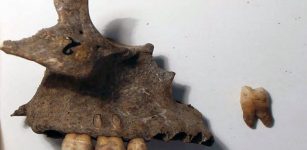 350-Year-Old Remains Unearthed In A Stone Age Site In Portugal
Archaeology | Feb 22, 2022
350-Year-Old Remains Unearthed In A Stone Age Site In Portugal
Archaeology | Feb 22, 2022 -
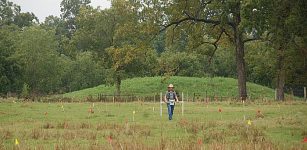 Remains at Crenshaw Site Are Local, Ancestors Of Caddo – New Study
Archaeology | Jun 15, 2023
Remains at Crenshaw Site Are Local, Ancestors Of Caddo – New Study
Archaeology | Jun 15, 2023 -
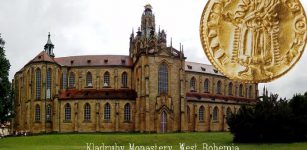 Accidental Discovery Of Large Trove Of 14th Century Gold And Silver Coins In West Bohemia
Archaeology | Aug 13, 2020
Accidental Discovery Of Large Trove Of 14th Century Gold And Silver Coins In West Bohemia
Archaeology | Aug 13, 2020 -
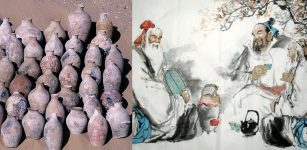 Ancient Civilizations Invented Alcohol 10,000 Years Ago
Ancient History Facts | Sep 13, 2016
Ancient Civilizations Invented Alcohol 10,000 Years Ago
Ancient History Facts | Sep 13, 2016 -
 Unexpected Discovery 130,000-Year-Old Neanderthal Stone Tools In Poland
Archaeology | Oct 30, 2023
Unexpected Discovery 130,000-Year-Old Neanderthal Stone Tools In Poland
Archaeology | Oct 30, 2023 -
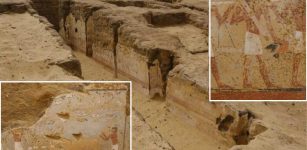 Old Kingdom Mastaba Decorated With Rare Paintings Found In Dahshur Necropolis, Egypt
Archaeology | Mar 22, 2024
Old Kingdom Mastaba Decorated With Rare Paintings Found In Dahshur Necropolis, Egypt
Archaeology | Mar 22, 2024 -
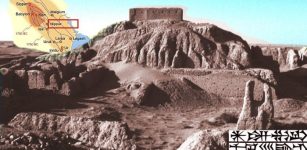 Nippur – Holy City Of God Enlil And One Of The Oldest Cities Of Sumer
Featured Stories | Jul 24, 2023
Nippur – Holy City Of God Enlil And One Of The Oldest Cities Of Sumer
Featured Stories | Jul 24, 2023 -
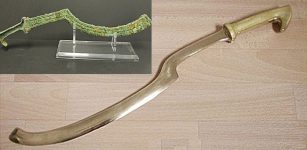 Khopesh Sword – Symbolic Weapon Of The Pharaohs And Emblem OF Egyptian Deities
Artifacts | May 27, 2021
Khopesh Sword – Symbolic Weapon Of The Pharaohs And Emblem OF Egyptian Deities
Artifacts | May 27, 2021 -
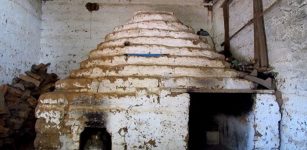 Ancient Mayans Used Saunas For Healing Purposes
Ancient History Facts | May 12, 2016
Ancient Mayans Used Saunas For Healing Purposes
Ancient History Facts | May 12, 2016 -
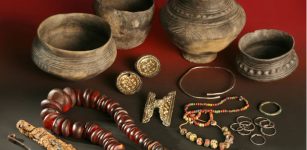 The Anglo-Saxon Migration: New Insights From Genetics
Archaeology | Sep 21, 2022
The Anglo-Saxon Migration: New Insights From Genetics
Archaeology | Sep 21, 2022 -
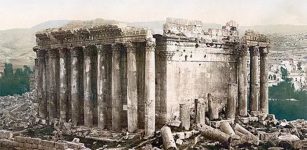 Baalbek: Were The Megaliths Put In Place Under Herod?
Archaeology | May 27, 2019
Baalbek: Were The Megaliths Put In Place Under Herod?
Archaeology | May 27, 2019 -
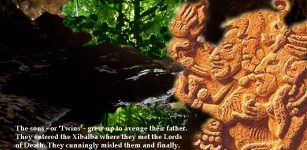 Xibalba: Nine-Leveled Underground Place Of Fear Ruled By Lords Of Death In Maya Beliefs
Featured Stories | May 12, 2020
Xibalba: Nine-Leveled Underground Place Of Fear Ruled By Lords Of Death In Maya Beliefs
Featured Stories | May 12, 2020 -
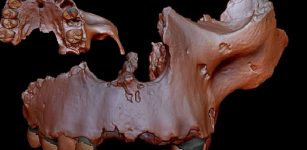 Genetic Evidence Retrieved From 800,000-Year-Old Human Tooth
Human Beginnings | Apr 2, 2020
Genetic Evidence Retrieved From 800,000-Year-Old Human Tooth
Human Beginnings | Apr 2, 2020 -
 Ethical Ancient DNA Research Must Involve Descendant Communities – Researchers Say
Archaeology | Jan 13, 2023
Ethical Ancient DNA Research Must Involve Descendant Communities – Researchers Say
Archaeology | Jan 13, 2023 -
 Mount’s Bay, Lyonesse, Langarroc: Legendary Submerged Lands And Buried Towns Of Cornwall
Featured Stories | Apr 21, 2022
Mount’s Bay, Lyonesse, Langarroc: Legendary Submerged Lands And Buried Towns Of Cornwall
Featured Stories | Apr 21, 2022 -
 The First ‘Viking’ Was A Bronze Age Man
Civilizations | Nov 18, 2019
The First ‘Viking’ Was A Bronze Age Man
Civilizations | Nov 18, 2019 -
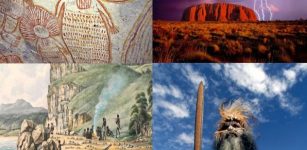 Ancient DNA Reveals A 50,000-Year-Old Secret And Re-Writes History Of Australia
Archaeology | Mar 8, 2017
Ancient DNA Reveals A 50,000-Year-Old Secret And Re-Writes History Of Australia
Archaeology | Mar 8, 2017

